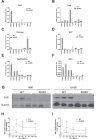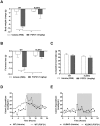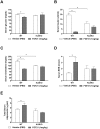FGF21 requires βklotho to act in vivo
- PMID: 23209629
- PMCID: PMC3507945
- DOI: 10.1371/journal.pone.0049977
FGF21 requires βklotho to act in vivo
Abstract
FGF21 has gradually become a focal point in metabolic research given its intriguing and complex biology and relevance to drug discovery. Despite the large amount of accumulated data, there remains a dearth of understanding of FGF21 physiology at the molecular/whole organism level. The scaffold protein βklotho (KLB) has previously been demonstrated in vitro to function as a co-factor permitting FGF21 mediated FGF receptor activation. However, the requirement for KLB in the propagation of FGF21 action in living animals has yet to be evaluated. To answer this question, we tested FGF21 in mice with total body ablation of KLB (KLBKO) and found no detectable activity. Firstly, we demonstrate that the disruption of KLB entirely abrogates acute FGF21 signaling in adipose tissue. We go on to show that this signaling defect translates to the absence of FGF21 mediated metabolic improvements in DIO mice. Indeed, KLBKO mice are totally refractory to FGF21-induced normalization of glucose homeostasis, attenuation of dyslipidemia, elevation of energy expenditure and weight loss. The lack of FGF21-driven effects was further substantiated at the transcriptional level with no FGF21 target gene signature detectable in adipose tissue and liver of KLBKO animals. Taken together our data show that KLB is a vital component of the FGF21 in vivo signaling machinery and is critically required for FGF21 action at the whole organism level.
Conflict of interest statement
Figures



References
-
- Kharitonenkov A, Larsen P (2011) FGF21 reloaded: challenges of a rapidly growing field. Trends Endocrinol Metab 22: 81–86. - PubMed
-
- Kharitonenkov A, Dunbar JD, Bina HA, Bright S, Moyers JS, et al. (2008) FGF-21/FGF-21 receptor interaction and activation is determined by betaKlotho. J Cell Physiol 215: 1–7. - PubMed
MeSH terms
Substances
LinkOut - more resources
Full Text Sources
Other Literature Sources
Molecular Biology Databases

